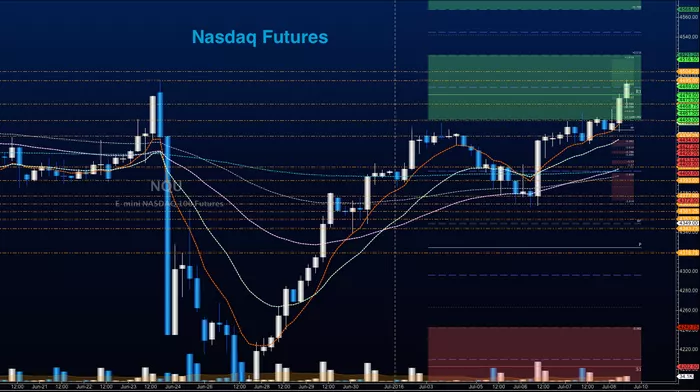Futures are a type of financial contract that allows traders and investors to buy or sell an asset at a predetermined price and date in the future. In the stock market, futures contracts are commonly used for hedging and speculation purposes. In this article, we will explore how futures work in the stock market, including their mechanics, benefits, and risks.
What are Futures Contracts?
A futures contract is a financial contract between two parties that obligates one party to buy an asset and the other party to sell an asset at a predetermined price and date in the future. In the stock market, futures contracts are typically based on underlying assets such as stocks, stock indexes, or commodities.
Futures contracts have standardized specifications, including the quantity and quality of the underlying asset, the delivery date, and the price. These contracts are traded on futures exchanges, where buyers and sellers can enter into agreements to buy or sell futures contracts.
Mechanics of Futures Trading in the Stock Market
Futures trading in the stock market involves buying or selling futures contracts based on the underlying stock index or individual stock. Here are the key steps involved in futures trading in the stock market:
-
Choosing the Underlying Asset
Traders and investors must first choose the underlying asset on which the futures contract will be based. This can be an individual stock, a stock index, or a sector index.
-
Contract Specification
Futures contracts have standardized specifications, including the quantity and quality of the underlying asset, the delivery date, and the price. Traders and investors must choose the appropriate futures contract based on their investment strategy and objectives.
-
Placing an Order
Traders and investors can place orders to buy or sell futures contracts through a futures broker or an online trading platform. Orders can be placed as either a buy order, indicating an interest in buying a futures contract, or a sell order, indicating an interest in selling a futures contract.
-
Price Discovery
Once an order is placed, the price of the futures contract is determined through a process of price discovery, which involves buyers and sellers negotiating the price based on factors such as supply and demand, market sentiment, and fundamental factors related to the underlying asset.
-
Delivery or Settlement
When the delivery date arrives, the futures contract is settled by either delivering the underlying asset or settling in cash. Alternatively, traders and investors can choose to settle the contract by closing out their position prior to the delivery date, either by buying back the contract or selling it to another trader.
Benefits of Futures Trading in the Stock Market
Futures trading in the stock market offers several benefits, including:
-
Hedging Against Price Fluctuations
Futures contracts allow investors to hedge against price fluctuations in the underlying asset. For example, a portfolio manager who holds a portfolio of stocks may use futures contracts to hedge against potential market downturns.
-
Leveraged Trading
Futures contracts allow investors to trade with leverage, meaning that they can control a larger position with a smaller amount of capital. This can amplify potential gains, but it also increases potential losses.
-
Diversification
Futures contracts provide investors with exposure to a wide range of assets, including stocks, stock indexes, and commodities. This can help investors diversify their portfolio and reduce risk.
Risks of Futures Trading in the Stock Market
Futures trading in the stock market also carries several risks, including:
-
Price Risk
Futures trading involves price risk, as the price of the underlying asset can be unpredictable and volatile. This can lead to losses if the price moves against the investor’s position.
-
Leverage Risk
Futures trading involves leverage, which can amplify potential gains but also increases potential losses. This can result in significant losses if the investor’s position moves against them.
-
Counterparty Risk
Futures trading also involves counterparty risk, which is the risk that the other party to the futures contract may default on their obligations. To mitigate this risk, futures exchanges require traders and investors to post margin, which is a deposit held by the exchange to cover any potential losses.
Conclusion
Futures trading in the stock market is a popular way for traders and investors to gain exposure to a wide range of assets, including stocks, stock indexes, and commodities. Futures contracts allow investors to hedge against price fluctuations, trade with leverage, and diversify their portfolio. However, futures trading also carries significant risks, including price risk, leverage risk, and counterparty risk. As with any investment, it is important for traders and investors to do their research, understand the risks involved, and develop a sound investment strategy before entering into futures trading in the stock market.


